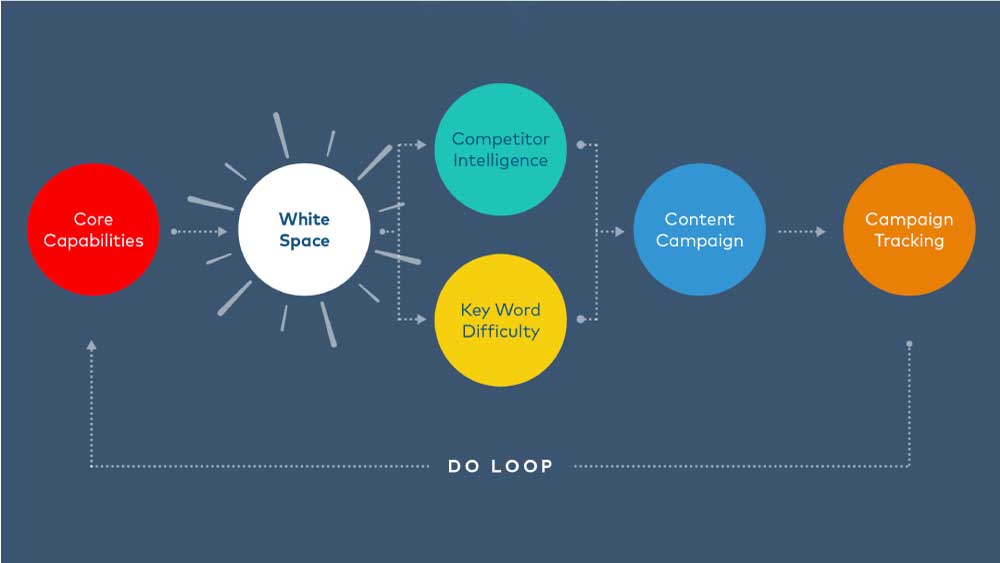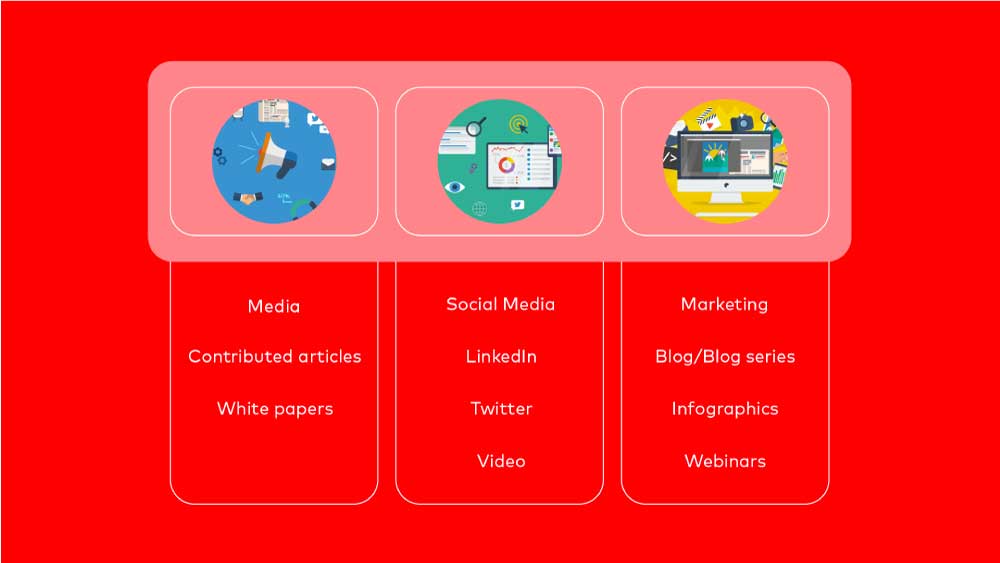In a world saturated with information and data, high-quality thought leadership is more important than ever to help your company stand out.
Original thought leadership greatly increases the effectiveness of your messaging and puts you in the driving seat to promote your own knowledge and skill-sets to potential investors.
In today’s competitive environment, and as asset management has become more commoditized, it’s more important than ever to cut through the noise with insightful content that provokes consideration from your target audiences and prospects and while it is resource intensive, research shows that it is the single most important factor in driving understanding and perception of external asset managers*, in short – it is the most value-adding activity marketing can undertake.
“Thought leadership is the single most important factor in driving understanding and perception of external asset managers.”
But how can thought leadership be utilised effectively? In our view, there are three clear stages in creating and promoting effective thought leadership:
1. Establish a niche and win category authority through preliminary research and ‘white space’ analysis - you need to find an under-indexed space in which your company has relevance, expertise and can stand out against competitors.
2. Creating your content with clear marketing objectives - this is where you ensure that you are telling the story you want to tell in the most impactful way possible.
3. Sharing your content - creativity needs to be applied when distributing your content and insight into your distribution channels is essential in ensuring you are achieving maximum diffusion of your thought leadership.
Winning Category Authority
Starting out, you need to revisit your company goals and marketing strategy to confirm what outcomes your thought leadership is designed to achieve. With these goals in mind, you can conduct an audit to benchmark your firms’ perception and brand presence against the industry and key competitors.
Collate all existing content and hold a workshop with key spokespeople to identify your key audience, your differentiated edge, message pillars and the key topics you want to associate with.
‘White spaces’ are unsaturated areas in which your firm can really own the conversation, in terms of media conversation as well as in terms of online search engine real estate, and finding them is a critical component in winning category authority.
There are plenty of ways to find white space that match up with your core capabilities, for example, carrying out a peer analysis to see what your competitors are doing or analysing which keywords they own will give you insight into which ones are available for you to own. You can also A/B test potential themes with your audience.
At Peregrine, we have created a white space framework that compares the proportion of tier 1 media coverage on a particular theme versus the proportion of organic demand for the topic by looking at social media engagement and Google search volumes. This way, you can see which themes are already under or over-indexed by the market as well as the demand for more content around them. This approach allows you more scope to drill down into different regions or even sub-themes within a wider topic.

At the end of this stage, you should have identified an effective and meaningful topic area where you are able to demonstrate your subject matter expertise and will not be adding to an already oversaturated conversation.
Creating your content

Once your topic has been identified, it is crucial to tailor it to your audience. You need to establish how you can provide answers to the questions they are asking in order to fully meet their needs.
What’s more, you need to establish how you want your audience to engage. This will tell you how you should visually tell your story and what collateral you’ll need to support that. Does your topic lend itself well to a white paper that can be supported by video and infographics or would it be better as a blog post that you can utilise as a hook for media relations? It is also at this point where you need to assess what proprietary data you need to support your content.
When creating your piece of thought leadership, it helps to work back from your ideal headline. This way, you can frame your content so it can be utilised in multiple pre-defined ways, which will save you from having to piece this together after the content has been created.
Importantly, the content produced must always be in line with your key messages to ensure what your audience takes away from your piece is what you want to be remembered for.
Sharing your content
When thinking about distribution, try to utilise as many channels as possible to achieve maximum impact. Repurposing your content to be used across different platforms is key to creating campaigns with longevity and influence.

Content will not generate awareness and engagement on its own. Creativity, insight and structure are necessities when creating thought leadership and they are just as important for its distribution. The main distribution channels can be divided into three categories: media, social media and marketing.
1. Media
By placing your thought leadership in the media, you contribute to establishing an overall positive media sentiment which can ultimately help investors to choose your firm over competitors as differentiating between managers becomes increasingly more difficult. Media distribution should typically be the ultimate goal for the bulk of your thought leadership:
- Contributed articles can be written and placed with key target publications that are relevant to your target audience.
- Longer and more detailed white papers can be reported on or used in commentary around the subject, they also make great hooks to strike up conversations with journalists to get them interested in your company.
2. Social Media
Social media is a medium through which investors are increasingly consuming content, with 63% of institutional investors now using social media according to a 2018 study by Greenwich Associates. Your thought leadership should form a central part of your social media strategy and should be shared across platforms such as:
- LinkedIn, which is the major social media platform for sharing thought leadership. It’s a professional platform where you can expect audiences to be willing to spend more time reading and considering content. You can share this from your company’s account, but we would also recommend sharing from the author’s personal page to achieve further traction and engagement. Twitter, where you can share engaging and easily digested snippets of insight. Striking infographics are a great tool on
- Twitter, which will help catch your audience’s attention and convey headline stats/information.
- YouTube or Vimeo, where animated infographics or key interviews can be easily placed for viewing and can often be more engaging than long-winded written pieces. What’s more, these platforms are only gaining in popularity – a 2019 study by Datareportal found that 79% of internet users have a YouTube account.
3. Marketing
Bespoke marketing materials are one of the most effective ways to tailor your content to ensure your thought leadership achieves maximum impact:
- Content can be used to create a blog or a blog series which centres around the main topic or findings. What’s more, if you’re posting a blog to your company’s website, you won’t be restricted by the confines of a journalist’s specification or a character count on social media. It is here where you will have the most freedom to explore your topic in detail and drill down into the key messages you want to convey.
- Your topic may be well suited to a webinar or podcast, which themselves open the door to more marketing outreach and actually give you the opportunity to interact with your audience on a personal level. In a study by InsideSales.com, webinars were identified by 73% of sales and marketing leaders as one of the best ways to generate quality leads.
How do we measure success?

Finally, measuring the effectiveness of your thought leadership is essential to allow you to adapt and improve. But how do you measure success?
“The ultimate desired outcome is to create content that pushes a potential lead to contact the firm, resulting in a lead conversion.”
Lead generation is one way in which you can gauge the success of a piece of content. If your thought leadership is behind a form where users have to input their contact details in order to access the full copy of the content, it allows you to capture short term engagement metrics, such as the number of report downloads with the long-term benefit of building a database of contacts that can be retargeted at a later stage.
Another metric of success is engagement, which can be measured by looking at content posted on all the relevant channels and how many times was it liked, shared or commented on. Whilst these metrics are useful, they shouldn’t be only indicators of assessing a campaign’s success as they don’t tell you about the brand’s wider impact.
Share of voice is a measure of brand awareness and how well your firm’s story is resonating with target audiences around the globe. Peregrine has a share of voice scoring system which scores firms based on their presence across a global list of tier one media and offers a powerful insight into media sentiment and messaging effectiveness.
If you have created valuable content which earns ‘category authority’ you will likely see an increase in search traffic, with positive effects on your ‘Google Page 1’, and so this is another important measure of success.
It is also worth noting that having an appropriate CRM, such as HubSpot, is vital as it allows businesses to improve the quality of communication with their leads and existing customers by centralising all the data and enabling a targeted approach to interactions, which in return increases customer lifetime value.


